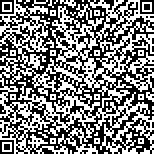| 引用本文: | 李林祥,黄艳斐,邢志国,李志雄,王海斗.超快激光制备仿生织构研究进展*[J].中国表面工程,2023,36(3):1~21 |
| LI Linxiang,HUANG Yanfei,XING Zhiguo,LI Zhixiong,WANG Haidou.Research Progress of Ultrafast Laser Fabrication of Biomimetic Textures[J].China Surface Engineering,2023,36(3):1~21 |
|
| |
|
|
| 本文已被:浏览 1831次 下载 884次 |

码上扫一扫! |
|
|
| 超快激光制备仿生织构研究进展* |
|
李林祥1, 黄艳斐2, 邢志国2, 李志雄1, 王海斗2,3
|
|
1.中国海洋大学工程学院 青岛 266000;2.陆军装甲兵学院装备再制造技术国防科技重点实验室 北京 100072;3.陆军装甲兵学院机械产品再制造国家工程研究中心 北京 100072
|
|
| 摘要: |
| 织构化可使零件或设备表面实现降低磨损、改变润湿性并提高抗反射性的效果,在医疗、机械、航空和海洋等领域展现出强大活力。为提升织构效果,表面织构技术引入仿生设计,通过在材料表面加工出类似生物表层的微 / 纳结构以达到特种表面需求。超快激光织构化是目前较为先进且重要的一种织构加工技术,针对超快激光制备仿生织构表面进行系统总结十分必要。对激光加工原理,以及制备耐磨性、润湿性、抗反射性三类特种表面的研究现状进行综述,简述三类织构表面的作用原理、仿生设计与优化。结果表明,超快激光可在材料表面制备出低热源损伤、高表面性能的精细仿生织构,通过仿生自然界中的生物表面结构,织构表面能够实现降低表面摩擦因数,获得超亲 / 疏水表面以及优异的抗反射性能。但超快激光无法准确烧蚀出所需织构尺寸结构,需要对激光加工进一步研究,将设计与加工紧密联系,构建超快激光织构化体系,实现未来超快激光织构化生产应用。 |
| 关键词: 超快激光 仿生织构 耐磨 润湿 抗反射 |
| DOI:10.11933/j.issn.1007?9289.20220817001 |
| 分类号:TB17;TN249 |
| 基金项目:清华大学摩擦学国家重点实验室开放基金(SKLTKF20B10)和国家自然科学基金(52105235,52130509)资助项目 |
|
| Research Progress of Ultrafast Laser Fabrication of Biomimetic Textures |
|
LI Linxiang1, HUANG Yanfei2, XING Zhiguo2, LI Zhixiong1, WANG Haidou2,3
|
|
1.College of Engineering, Ocean of China University, Qingdao 266000 , China;2.National Key Laboratory for Remanufacturing, Army Academy of Armored Forces,Beijing 100072 , China;3.National Engineering Research Center for Remanufacturing, Army Academy of Armored Forces, Beijing 100072 , China
|
| Abstract: |
| Ultrafast laser texturing is a new surface processing method that uses ultrashort pulse laser technologies such as picosecond and femtosecond lasers to prepare finer texture structures based on reducing heat source damage on the surface of materials. With the development and application of bionics, the surface structure features of animals and plants have been gradually applied to the surface of materials, and surface properties such as wear resistance, anticorrosion, defrosting, antireflection, and antifouling have been obtained. However, biomimetic textures are processed by long pulse lasers. The surface is significantly affected by heat, and the texture size cannot be refined. Therefore, ultrafast laser preparation of biomimetic textures has been adopted because it can realize refined design and processing of textures and greatly improve the reproduction accuracy of biomimetic textures. Moreover, it enhances the mechanical properties of the material surface and provides better surface quality. At present, biomimetic targets for the preparation of biomimetic textures using ultrafast lasers are gradually expanding from shark skins and lotus leaves to carapaces, moth eyes, feathers, and other biological structures with surface properties. The main texture types are micro-nano composites, array geometries, and random textures. Using ultrafast lasers, a series of biomimetic texture performance studies and optimizations have been performed to explore the ablation mechanisms of different materials. In this paper, the research progress of ultrafast laser biomimetic texture is reviewed in terms of the three properties of wear resistance, wetting, and antireflection, and the processing principle of ultrafast lasers is introduced. Ultrafast lasers enable energy deposition to occur at a solid density and ultrashort pulse width, change the interaction mechanism between the laser and matter, and effectively reduce thermal effects. The ablation thresholds of different materials are summarized in this paper. Through the study of biomimetic textures such as the composite micro-convex structure of lotus leaves, accompanying wave and convex structure of insects, and ridged-scale structure on the surface of reptiles and shark skin, it was found that the density of the texture surface and direction of friction convergence are important factors affecting the frictional behavior of textures. By controlling the texture parameters, ultrafast laser biomimetic textures can reduce the friction coefficient of most metals by 20–40%. Through superhydrophobic structures such as bionic rose petals and mosquito compound eyes, the contact angle of the material surface can reach a superhydrophobic state of more than 150° hich effectively improves the anticorrosion, microchannel, and antifrost performance. In general, micropillar arrays with small diameters, dense spacings, and large depths exhibit better hydrophobic effects. However, the influence of the laser on the material surface increases its chemical polarity, leading to hydrophilicity. However, with the adsorption of carbon atoms and organic matter, the nonpolar bonds on the material surface increase, resulting in a decrease in the free energy of the material surface and causing the occurrence of the wettability transition phenomenon. Therefore, the wettability of a laser-machined surface can be changed by controlling the free energy of the material surface. Femtosecond lasers can be used to fabricate micro- to nanostructures on silicon thin films, improving their light-harvesting capabilities. Changing the laser processing medium can further increase the texture density and significantly reduce the reflectivity. Additionally, other elements can be doped into the material surface under the action of pulsed radiation, thereby further improving the antireflection performance of materials. In summary, the technology of biomimetic texture preparation using ultrafast lasers is gradually being applied in many fields such as machinery, medical treatment, aviation, and infrared detection. Using ultrafast lasers to fabricate biomimetic textures to realize and optimize various functional surfaces has become a current research hotspot. Finally, this paper summarizes the basic principles of ultrafast laser processing and comprehensively discusses the sources of biomimetic designs for three types of textures, including wear resistance, wetting, and antireflection, as well as the design and processing methods of the parameters for the three types of textures in different application environments. The action mechanism and principle of ultrafast laser biomimetic texture are analyzed. Furthermore, the ultrafast laser processing of biomimetic texture is comprehensively described and the development direction of ultrafast laser biomimetic texture preparation is provided. |
| Key words: ultrafast laser biomimetic texture abrasion resistance wettability anti-reflection |
|
|
|
|

